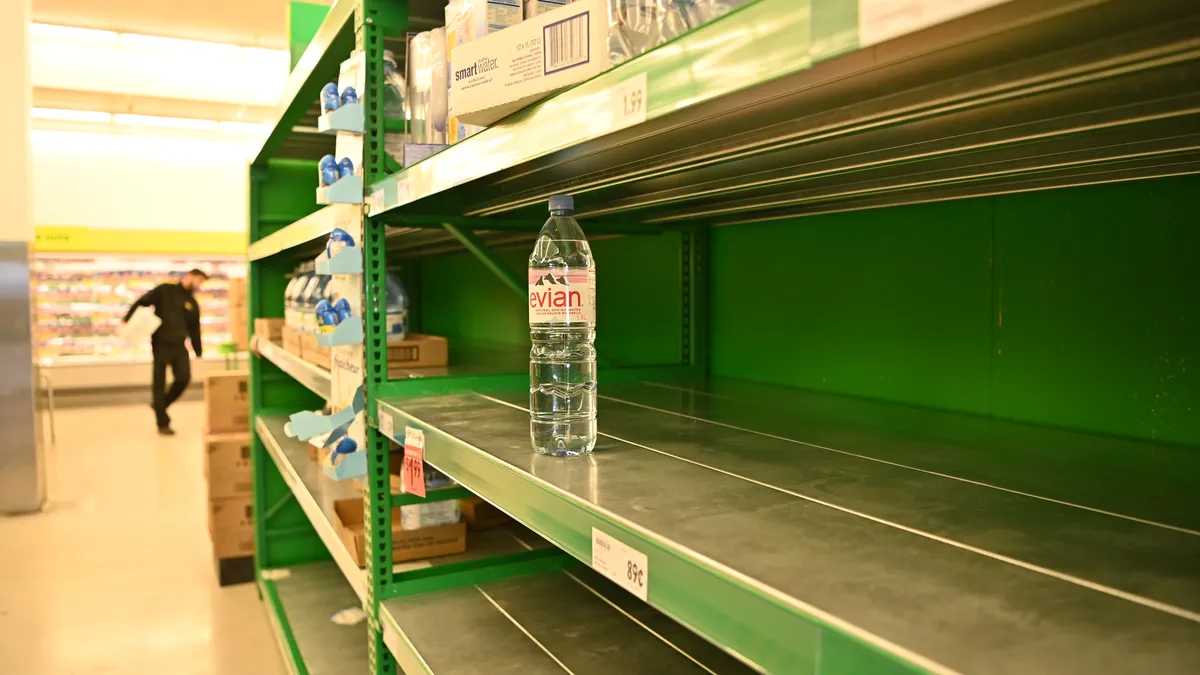Dive Brief:
- The Centers for Disease Control and Prevention (CDC) has published a flowchart outlining the actions employers should take before reopening during the COVID-19 pandemic.
- Employers should first consider whether reopening will be consistent with applicable state and local orders and whether they are prepared to protect employees at a higher risk for severe illness, it said. Employers should not reopen if the answer to either of these questions is "no," according to the CDC.
- Next, employers should put into place recommended health and safety actions, including but not limited to: promotion of hygiene practices like handwashing and wearing a cloth face covering; intensifying procedures for cleaning, disinfection and ventilation; and encouraging social distancing. Further, employers should develop and implement procedures to check employees' signs and symptoms daily, encourage those who are sick to stay home and plan for the event in which an employee gets sick. Employers should meet all of these safeguards before reopening, the CDC said.
Dive Insight:
Although the CDC and the White House have announced guidance documents and a three-phase reopening plan, implementation of the included protocols will depend on the decisions of state and local governments. Moreover, it may be months before some areas of the U.S. reach the last stages of the reopening process, sources previously told HR Dive.
There are a number of issues at the state and local level that employers will need to consider. For example, Vermont has ordered that employees in the state complete a mandatory health and safety training, with additional training requirements for employers with more than 10 employees. States including Pennsylvania have procedures for reporting a refusal of suitable work, which may arise should employees decline the opportunity to return to work because of COVID-19.
In addition to its flowchart, the CDC has released guidelines for public-facing businesses like bars and restaurants. A guidance document published by the Occupational Health and Safety Administration (OSHA) detailed outbreak prevention measures as well as projections of how COVID-19 outbreaks affect businesses. The impacts of a COVID-19 outbreak extend beyond absenteeism and include changes in consumer demand, shopping patterns and supply and delivery interruptions, OSHA said.
One aspect of reopening that is likely to differ from employer to employer is COVID-19 testing. Attorneys who spoke to HR Dive earlier in May said companies opting to test would need to consider the type and availability of tests and the need to protect those conducting testing. Ultimately, employers may decide to conduct temperature checks either as a supplement or as a replacement for COVID-19 testing. Testing, moreover, won't constitute a full reopening plan on its own, the attorneys said.
A return to the physical workplace will also mean reimagining business models, analysts at EY told HR Dive. Officials at the company have focused their efforts on putting workers' health and safety first and ensuring that previous efforts in areas like diversity and inclusion continue to receive support from HR.













